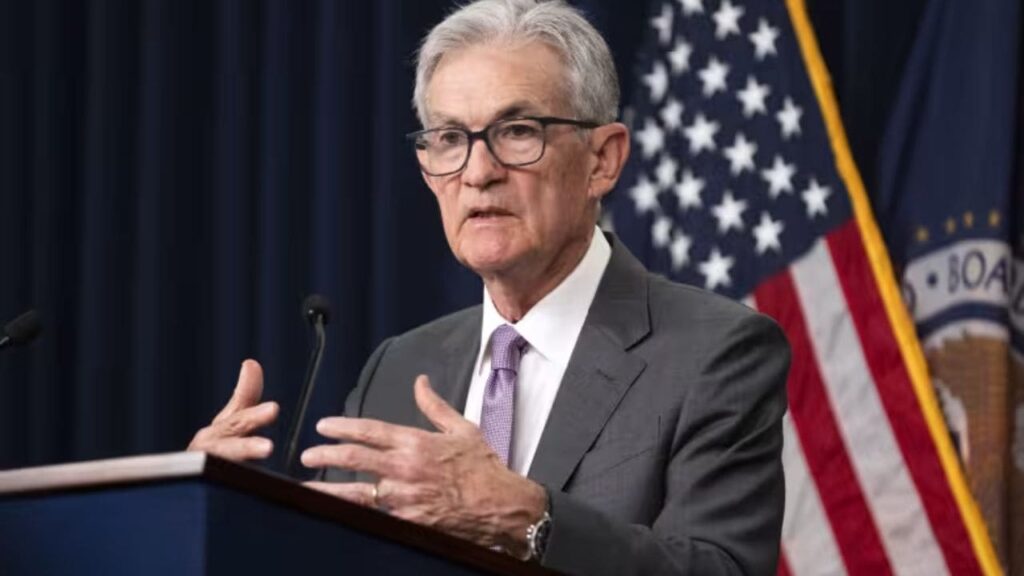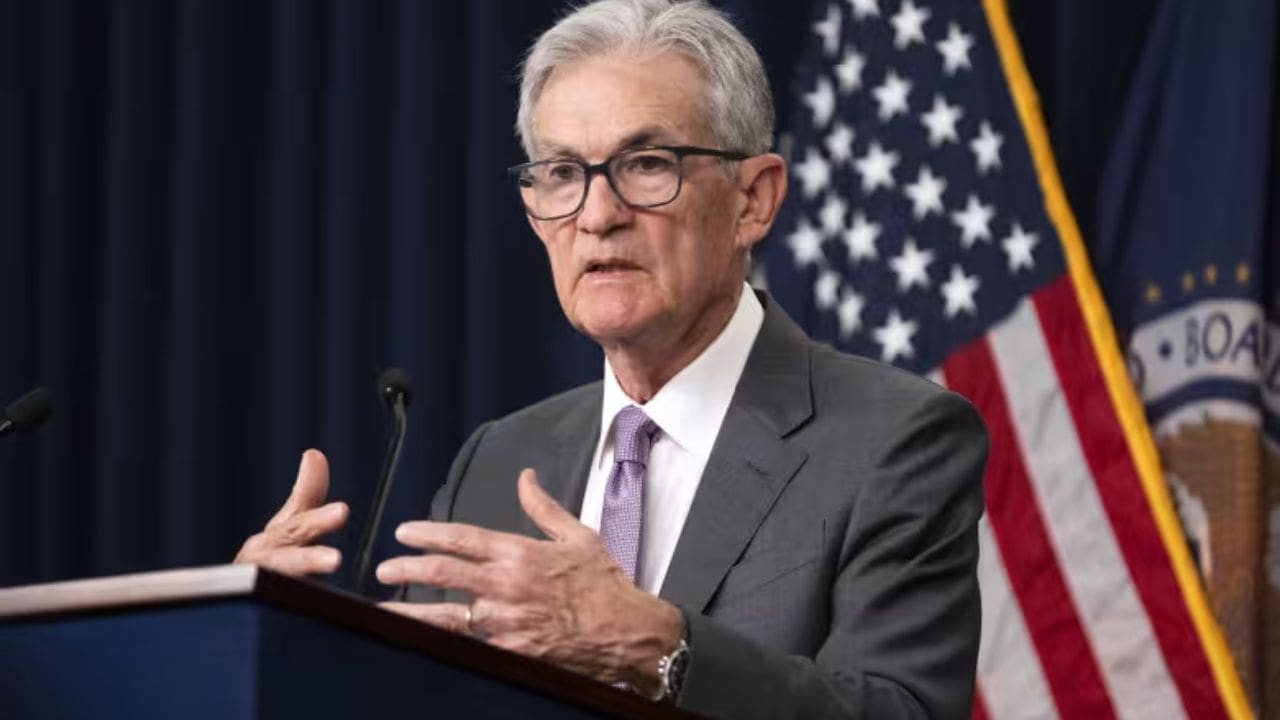August jobs report 2024, U.S. job market, Federal Reserve interest rates, unemployment rate August 2024, U.S. economy update, Federal Reserve policy, inflation rates, labor market softening, U.S. employment data, Fed rate cut 2024, U.S. job growth 2024
The August 2024 jobs report shows the U.S. added fewer jobs than expected, with the labor market cooling. Discover what this means for the Federal Reserve’s interest rate decisions, the state of the U.S. economy, and future inflation expectations. Learn how this data influences the Fed’s policy.

What Today’s Jobs Report Means for the Fed and Economy: A Comprehensive Analysis
The U.S. economy is a complex system that heavily depends on factors like job creation, inflation rates, and the Federal Reserve’s monetary policies. The August jobs report, released recently, sheds light on the current state of the labor market and its implications for the U.S. economy and Federal Reserve’s decision-making process.
The August Jobs Report: Fewer Jobs Than Expected
According to data from the Bureau of Labor Statistics, the U.S. economy added 142,000 jobs in August 2024, a lower number than many analysts had anticipated. However, this figure was a marked improvement compared to the revised July job additions, which totaled 89,000. The unemployment rate ticked down slightly, holding steady around 4.2%. These mixed results underscore a job market that is neither booming nor collapsing, but rather cooling down after a period of post-pandemic recovery.
While these numbers indicate a “softening” of the labor market, the U.S. economy still remains robust. Federal Reserve Governor Christopher Waller commented that the labor market “has softened but not deteriorated.” This paints a picture of a cooling job market, but one that remains stable and capable of sustaining economic growth without overheating.
Fed’s Interest-Rate Policy: A Delicate Balance
The Federal Reserve’s main task is to balance economic growth with inflation control. Too much growth can lead to rising prices (inflation), while too little growth risks economic contraction and recession. With the labor market cooling and inflation nearing the Fed’s annual target of 2%, the central bank faces a tough decision regarding interest rates.
The jobs report is an essential factor in the Federal Reserve’s monetary policy decision-making. In the wake of the August data, there is a growing consensus that the Federal Reserve will likely opt for a quarter-point interest-rate cut during its next policy meeting, scheduled for September 17-18, 2024. The central bank had been considering a more aggressive half-point reduction, but the August jobs data suggests that the economy is not deteriorating rapidly enough to merit such a drastic move.
Why Jobs Data is Crucial for Fed Decision-Making
The Federal Reserve closely watches the jobs report as it provides critical insights into the health of the U.S. labor market, which in turn affects the broader economy. When the labor market is strong, with rising employment and wages, it can fuel consumer spending, driving economic growth. However, if the labor market becomes too strong, it can push wages and prices upward, leading to inflation. This scenario forces the Fed to raise interest rates to keep inflation in check.
On the other hand, if the labor market weakens, consumer spending can fall, slowing economic growth and increasing the risk of a recession. In such cases, the Fed may cut interest rates to make borrowing cheaper, thereby stimulating economic activity.
Labor Market Cooling but Not Collapsing
The August jobs report confirmed that the U.S. labor market has cooled significantly from the red-hot levels it reached in the immediate post-pandemic recovery. Hiring has slowed down, but the unemployment rate remains relatively stable. This cooling is precisely what the Federal Reserve had hoped to achieve without triggering an economic downturn.
In his speech at the Jackson Hole Symposium in August, Federal Reserve Chair Jerome Powell emphasized the importance of striking a balance between cooling the labor market and preventing an economic collapse. “It seems unlikely that the labor market will be a source of elevated inflationary pressures anytime soon,” Powell said, adding that the Fed does not want to see further significant softening in the labor market.
Inflation: Approaching the Target but Still Elevated
While the labor market has cooled, inflation remains a key concern for the Federal Reserve. The central bank has been aggressively raising interest rates since 2022 to combat inflation, which had surged to multi-decade highs in the aftermath of the pandemic. These rate hikes have helped bring inflation down toward the Fed’s target of 2%, but inflation remains elevated in certain sectors of the economy.
The Fed’s decision-making process is heavily data-dependent, and upcoming inflation figures will be crucial in determining its next move. Policymakers are expected to get a look at August inflation data before they meet in September, which will give them a clearer picture of whether inflation is continuing to fall.
If inflation data suggests that price pressures are easing, this will likely solidify the case for a quarter-point rate cut. Conversely, if inflation remains stubbornly high, the Fed may decide to hold off on cutting rates or opt for a more aggressive approach.
Interest-Rate Futures and Market Reactions
The financial markets closely monitor every hint of the Federal Reserve’s policy intentions, and the jobs report plays a significant role in shaping market expectations. As of Friday morning, interest-rate futures market pricing implied approximately 60% odds of a quarter-point rate cut at the September meeting. The remaining odds lean towards a half-point cut, although this scenario is becoming increasingly unlikely based on the jobs data.
Notably, these market odds remained relatively unchanged following the release of the August jobs report, indicating that investors are not expecting any drastic shifts in the Fed’s policy stance. This stability in market expectations reflects the general consensus that while the labor market has cooled, it has not deteriorated to the point where more aggressive action is necessary.
The Fed’s Approach: A Gradual Path Forward
With the August jobs report showing no major red flags, Federal Reserve officials are likely to proceed cautiously. Rather than making any hasty moves, the Fed is expected to adopt a gradual, meeting-by-meeting approach to interest rates, allowing for adjustments as more data becomes available.
Following the September meeting, the Fed will have two more policy meetings before the end of the year, in November and December. Each of these meetings will be an opportunity for the central bank to reevaluate its stance based on the incoming economic data, including jobs reports, inflation figures, and other economic indicators.
This cautious approach aligns with the Federal Reserve’s broader strategy of ensuring a soft landing for the economy—cooling inflation without triggering a recession. By moving gradually, the Fed hopes to maintain flexibility in its policy decisions and avoid the potential pitfalls of acting too aggressively in either direction.
Long-Term Outlook: What the Jobs Report Signals for the Economy
While the August jobs report signals a softening labor market, it also suggests that the U.S. economy remains on solid footing. The fact that the economy is still adding jobs, albeit at a slower pace, indicates that the post-pandemic recovery is continuing, albeit more gradually.
This gradual cooling of the labor market is actually a positive development for the Federal Reserve, as it reduces the risk of wage-driven inflation while allowing the economy to continue growing. However, the challenge for policymakers will be to keep inflation in check while ensuring that the labor market does not weaken too much.
Looking ahead, the Fed’s decisions will depend heavily on the data that emerges in the coming months. If inflation continues to fall and the labor market remains stable, the Fed may have room to continue cutting interest rates. On the other hand, if inflation proves more persistent, or if the labor market weakens further, the Fed may need to rethink its approach.
Conclusion: A Balanced Labor Market and Cautious Fed
The August jobs report provides valuable insights into the current state of the U.S. economy and the Federal Reserve’s next steps. While job growth has slowed and the labor market has cooled, there are no signs of a major downturn on the horizon. This gives the Fed room to adopt a cautious, data-driven approach to its monetary policy decisions.
With inflation nearing the central bank’s target and the labor market stabilizing, the Federal Reserve is likely to opt for a quarter-point interest-rate cut at its September meeting. However, the Fed will continue to monitor the incoming data, making adjustments as necessary to maintain a balance between inflation control and economic growth.
The U.S. economy remains on solid ground, even as it navigates the challenges of the post-pandemic recovery. The Federal Reserve’s careful approach will be key to ensuring that the economy continues to grow while keeping inflation in check, ultimately paving the way for long-term stability.
Read More
